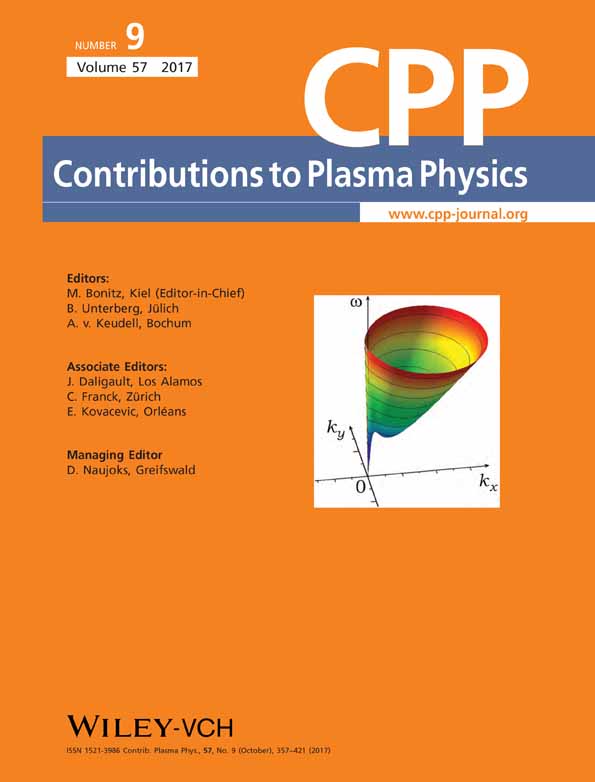Twisted electrostatic waves in a self-gravitating dusty plasma
Abstract
A generalized response (dielectric) function for twisted electrostatic waves is derived for an un-magnetized self-gravitating thermal dusty plasma, whose constituents are the Boltzmann-distributed electrons and positive ions in the presence of negatively charged micrometre-sized massive dust particulates. For this purpose, a set of Vlasov–Poisson coupled equations is solved along with the perturbed Laguerre–Gauss distribution function, as well as the electrostatic and gravitational potentials in the limit of paraxial approximation. For plane wave solution, the wavefronts of the dust-acoustic (DA) wave are assumed to have a constant phase with electric and gravitational field lines propagating straight along the propagation axis. On the other hand, non-planar wave solutions show helical (twisted) wavefronts, in which field lines spiral around the propagation axis owing to the azimuthal velocity component to account for the finite orbital angular momentum (OAM) states. The dispersion relation and damping rate for twisted DA waves are studied both analytically and numerically. It is shown that finite OAM states, the dust to electron temperature ratio, and dust self-gravitation effects significantly affect the linear dispersion and Landau damping frequencies. In particular, the phase speed of twisted DA waves is reduced with the variation of the twist parameter η (= k/lqϕ), dust concentration δ (= nd0/ni0), and dust self-gravitation α (= ωJd/ωpd). The relevance of our findings to interstellar dust clouds is also discussed for micrometre-sized massive dust grains.




